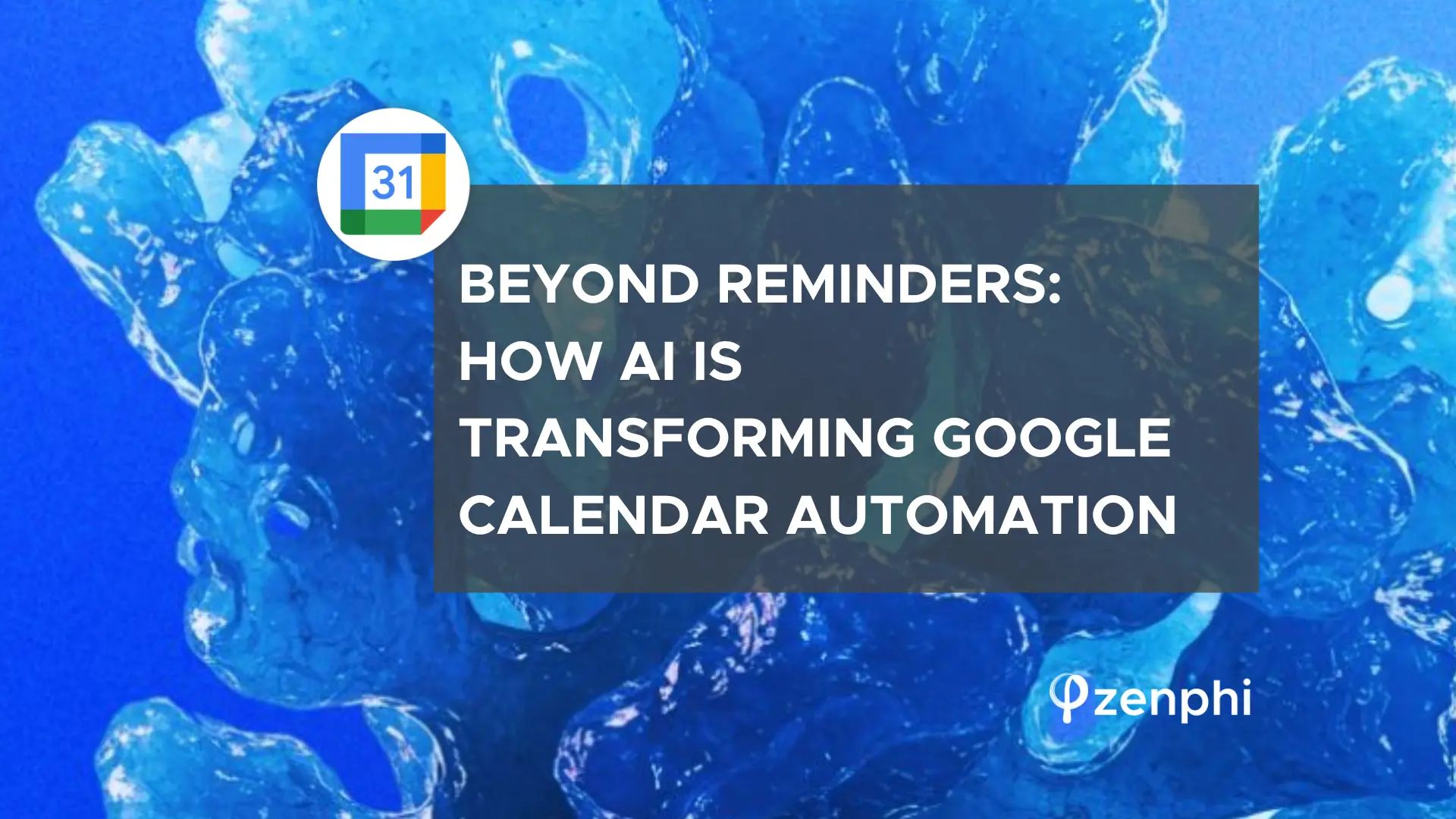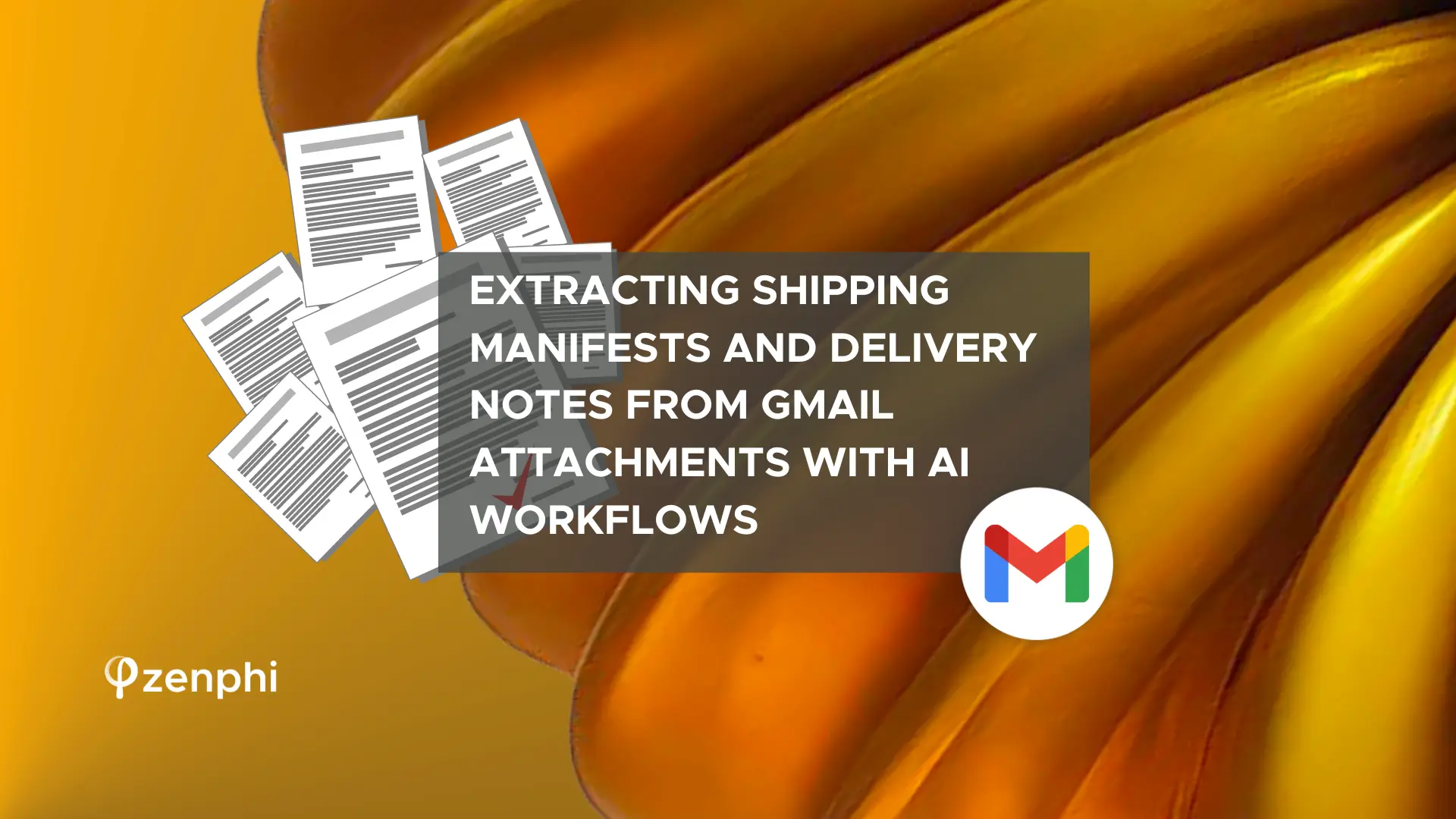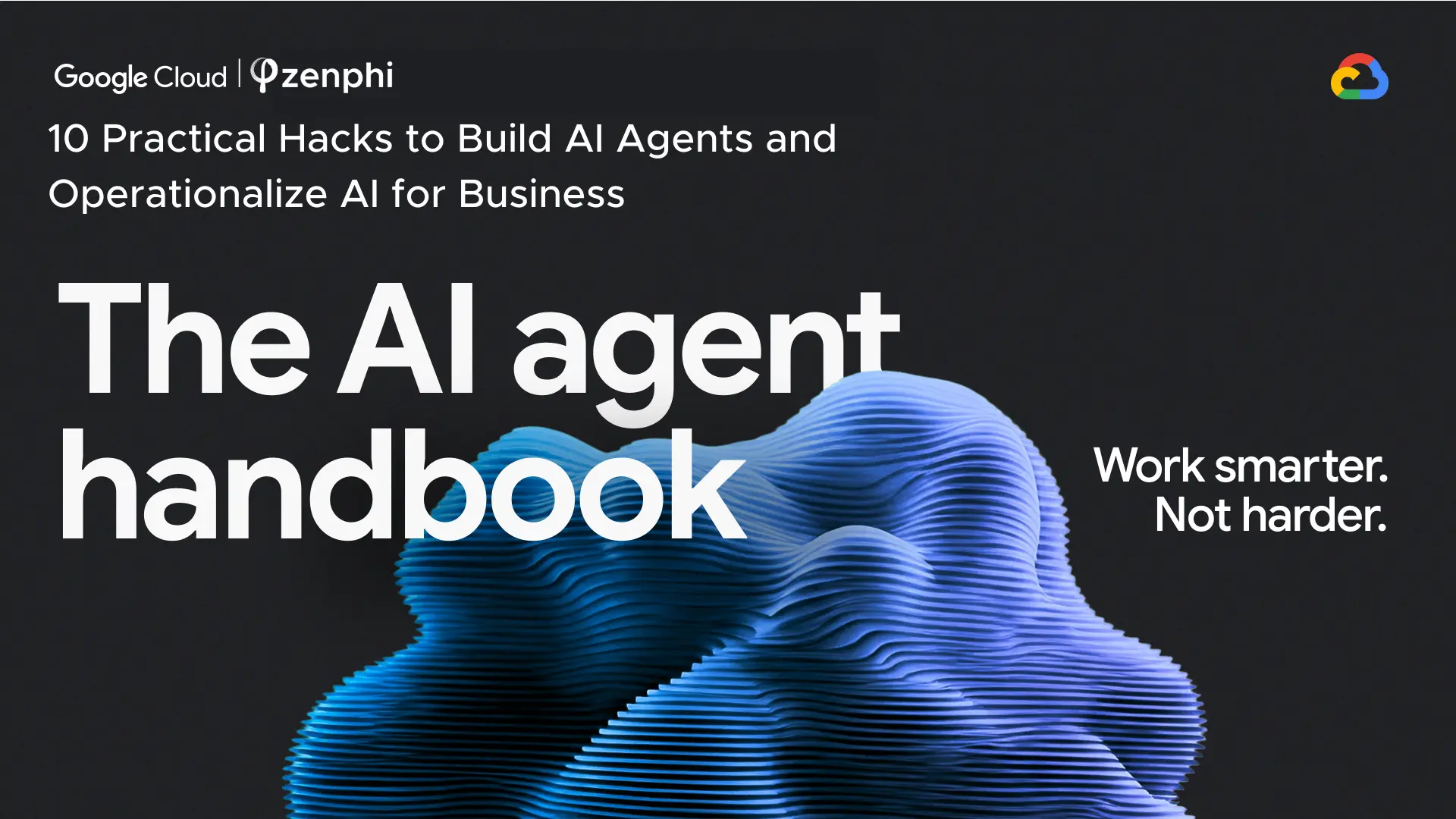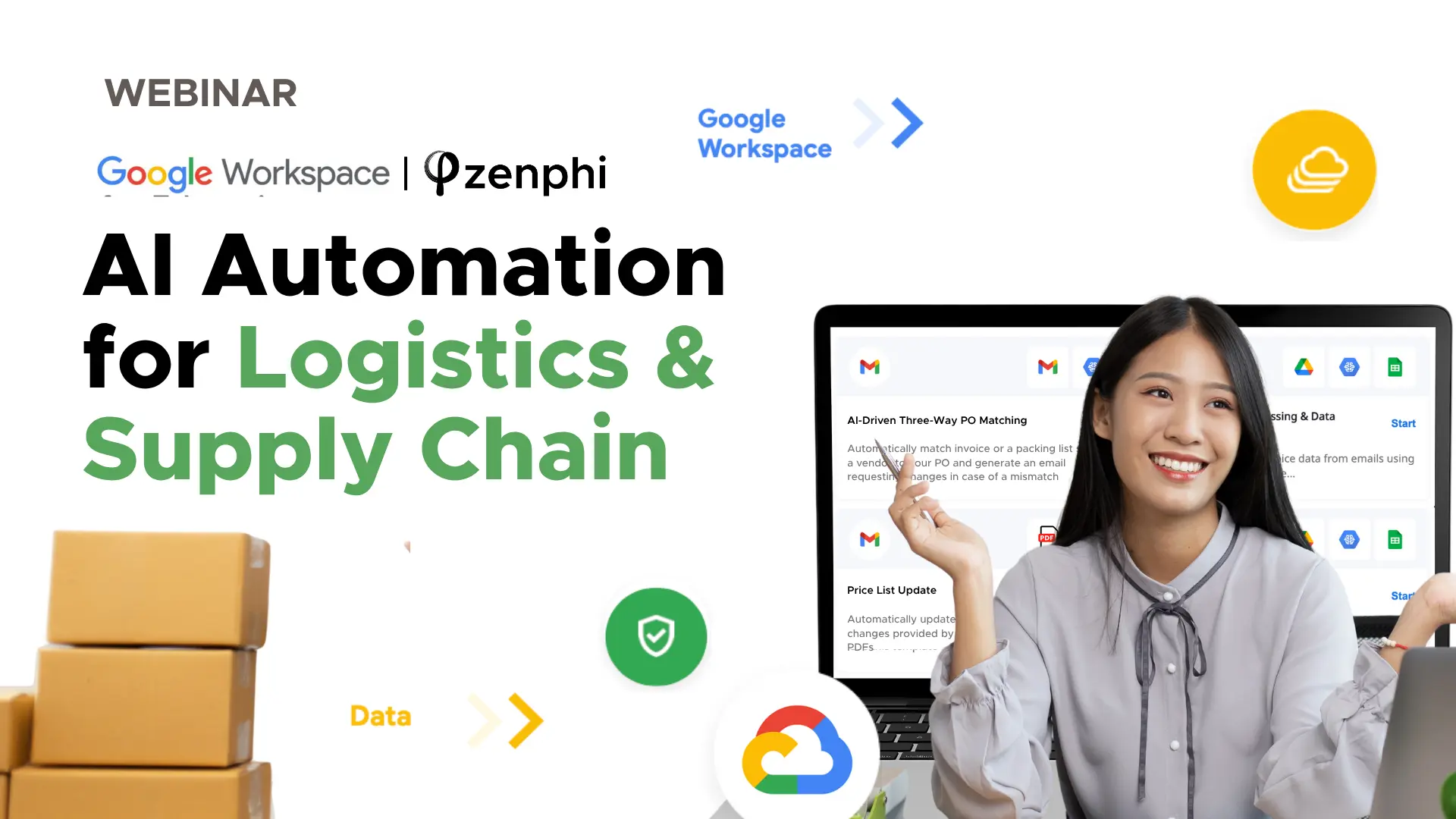Every organization and establishment faces various challenges, and LGU offices and city councils are no exemption. These challenges were made even worse when COVID-19 hit and put the entire world at a standstill. It made us reconsider how we execute our daily operations. Public offices had to slow down even while work piles up. Local government units never stopped catering to their constituents’ needs even though COVID-19 has also put restrictions on their movements. But there is a way for LGUs to help unburden their staff and make their tasks less of an uphill climb, especially during these trying times. They can do it by digitizing some of their recurring functions such as automating feedback/complaint workflow of their offices.
Automating some of the LGUs’ recurring human processes will allow their offices to function efficiently and stay productive even with reduced manpower and COVID-19 restrictions.
So, how can LGUs start automating some of their existing processes?
When it comes to workflow automation, they can hire a specialist who can take on their processes and code them into functional automated systems. The other route is using drag and drop automation platforms such as zenphi to take care of their recurring workflows.
The first option can be costly because you need to bring in a highly technical and specialized person to code and manage it for your organization. The latter can be learned even by non-tech people due to its no code nature.
Also, usually LGUs need to react quickly to policy changes or situations like COVID-19. That’s another area where no code platforms like zenphi shine. They reduce the time to market to hours and days compared to months and years in case of coding.
Using zenphi, LGUs can now automate most of their processes, starting with automating feedback/complaint workflow so their offices can easily deal with their constituents’ complaints and feedback.
How you can use zenphi to start automating feedback/complaint workflow
Knowing how your constituents view your office and how you are managing your area of responsibility is very important. You can also gain good insight from their words and use it to help improve the way you provide essential services. That is why it is a good thing to make it easier for them to submit feedback and complaints to your office.
By opening this channel, you also open the risk of overwhelming your staff. To prevent this from happening, automating feedback/complaint workflow is a good solution. Not only is it easier for your constituents to submit their opinion, but it will also be easier for your staff to deal with them.
By the way, this is just a simple example to demonstrate the feedback/complaint workflow automation for LGUs. You can easily change and adapt this to your own requirements. For example, you can drag and drop a Sentiment Analysis action to use Artificial Intelligence to get a feeling of the feedback sentiment and route it accordingly.
Here’s how the process looks like:
- Using Google Forms, create your feedback/complaint form. Include details such as name, email, post/zip code, and the feedback/complaint message.
- Use Google Sheets to create a list of your staff, their emails, and the post/zip codes assigned to them.
- Store both the form and the list of staff in a specified Google Drive.
- When someone submits feedback or complaint using the form you have established, this flow will trigger automatically and run. It will send a confirmation email to the person who submitted the form and then, inform the staff assigned to that particular post/zip code that a feedback/complaint came in.
The tools you will need in automating feedback/complaint workflow:
- Google Forms to create the feedback/complaint form.
- Sheets for the list of staff, their emails, and the post/zip codes assigned to them.
- Google Drive to store the form and the Google Sheets file.
- zenphi to automate the entire workflow.
The step-by-step process to automating feedback/complaint workflow:
Step 1.
Open Google Forms and create the Feedback/Complaint form. Include details such as the submitter’s name, email address, post/zip code, feedback type, and the feedback text.
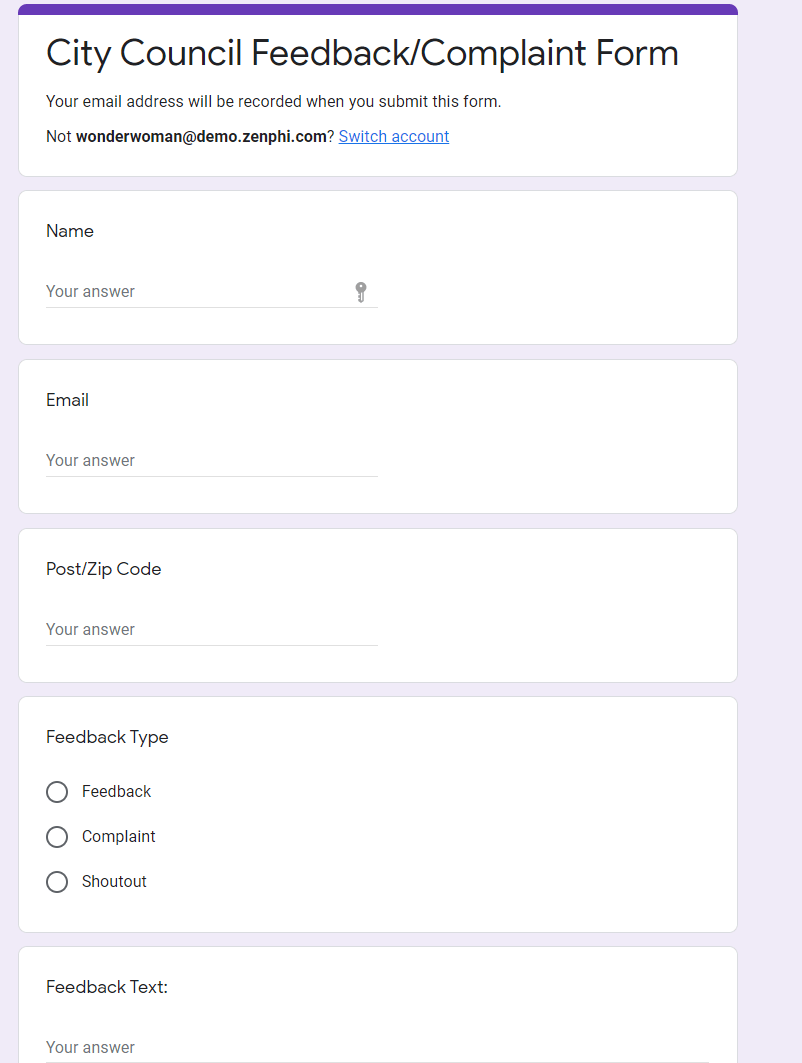
Using Google Sheets, create a list of staff that will take care of the feedback/complaint according to post/zip codes.
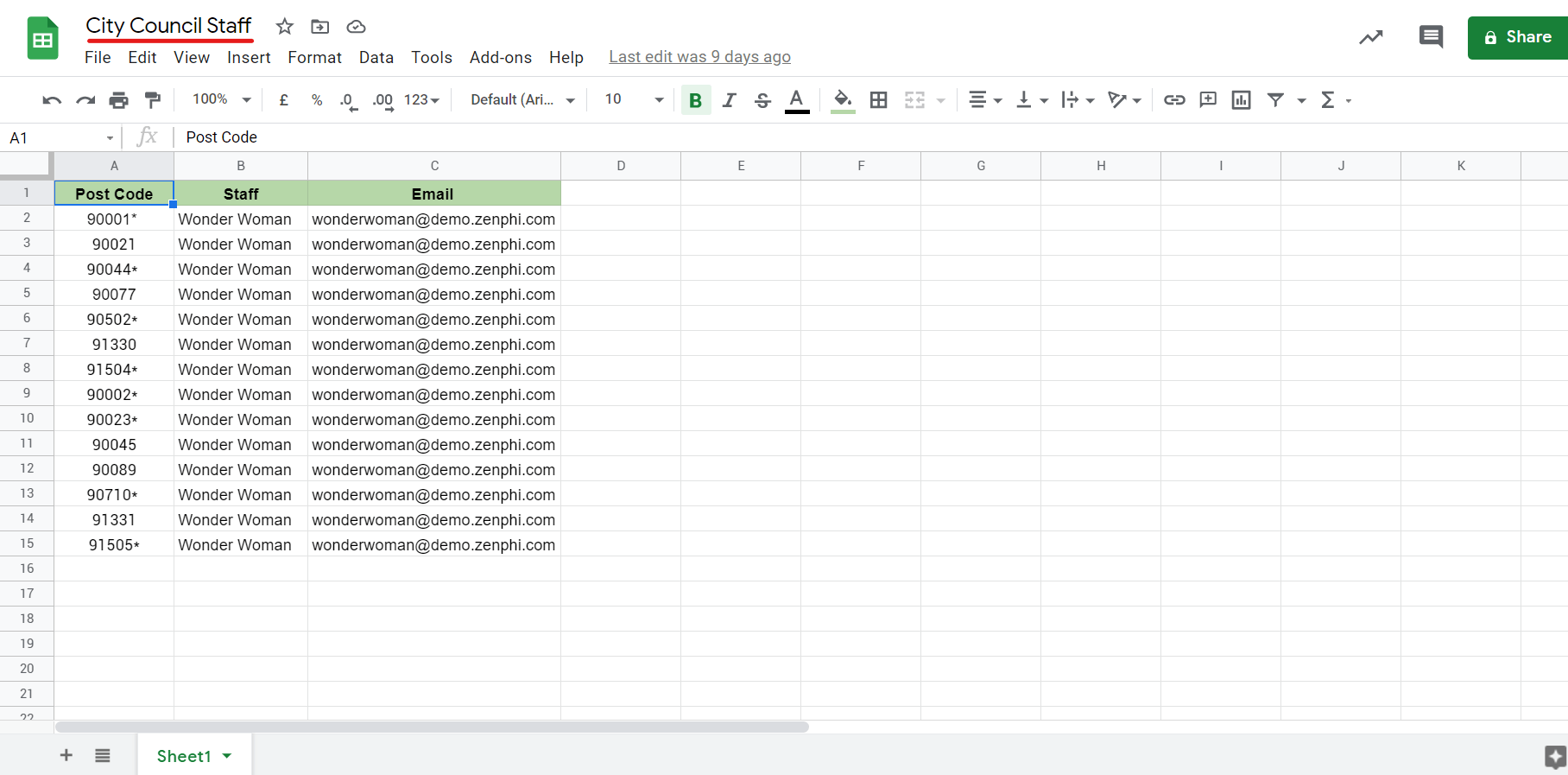
Store both files in a specific folder.

Step 2.
To create a new flow, we are going to log into our zenphi account. If you haven’t yet registered, you can create a free basic account using your Google credentials. Click the Create Flow button.
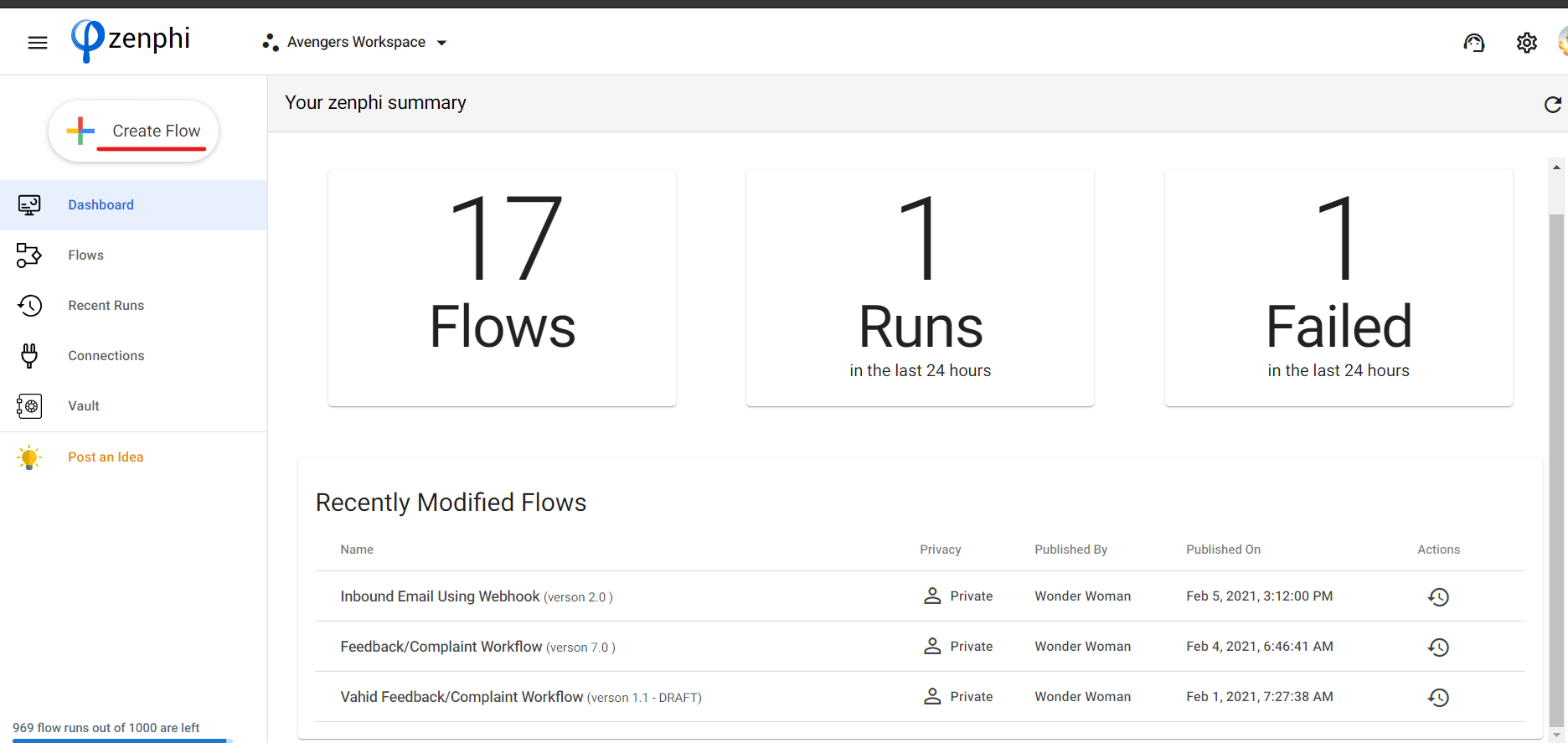
When you arrive at the next section, you will have to choose the trigger action. The trigger action is what will activate this automated workflow. In this case, we will choose New Response as the trigger. This means, every time the assigned form(the Feedback/Complaint form) is submitted, this workflow will automatically run.
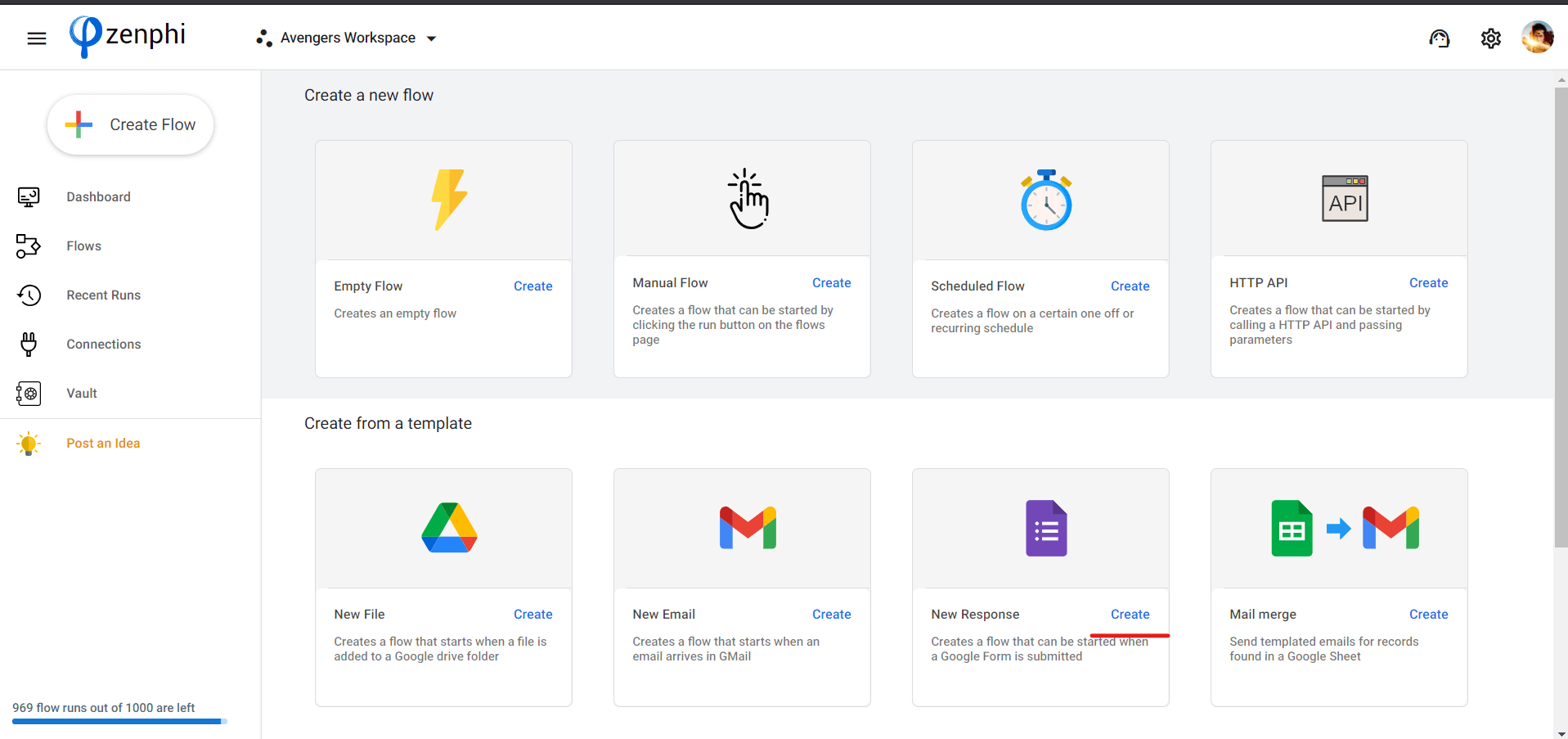
This is what our blank workflow looks like when you hit the Create button:
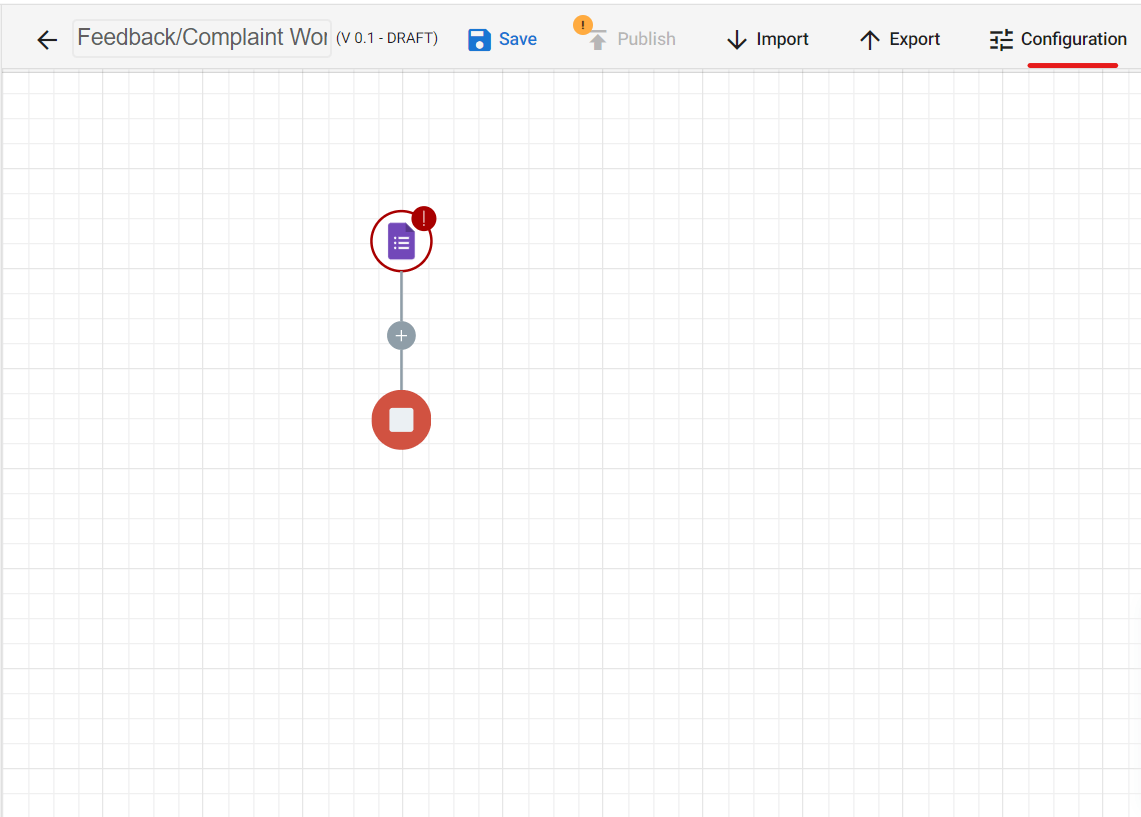
Click the Configuration button to assign a name to your new workflow.
Step 3.
In the Designer panel, click Google Sheets. And then, drag and drop Lookup Row into the blank workflow.
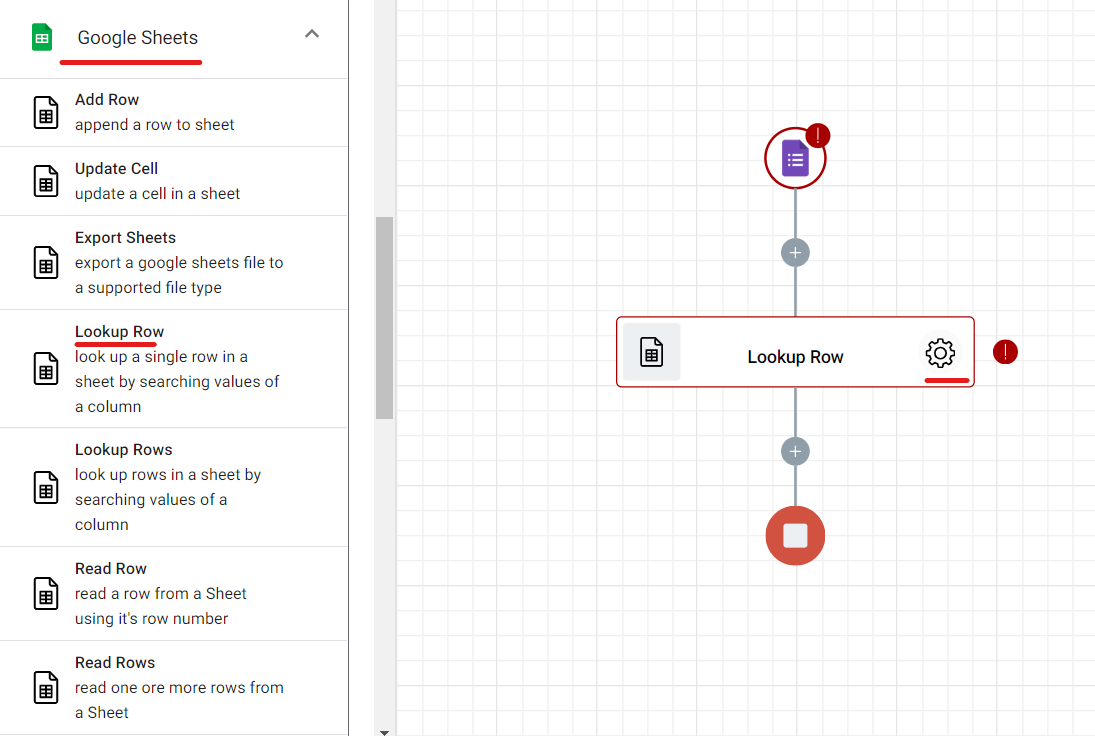
To configure this step, click the Settings icon and start by naming it. Let’s name it “Lookup City Council Staff”.
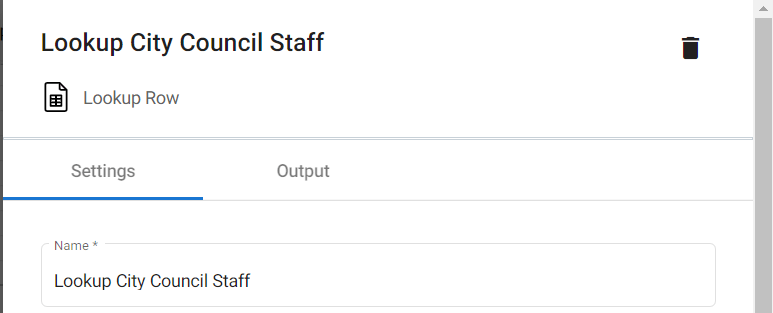
In the Connection field, choose the Google Workspace account storing the files you made earlier. You can also add a new Connection by clicking the + button.

For the File field, look for the Google Sheet containing the list of staff.
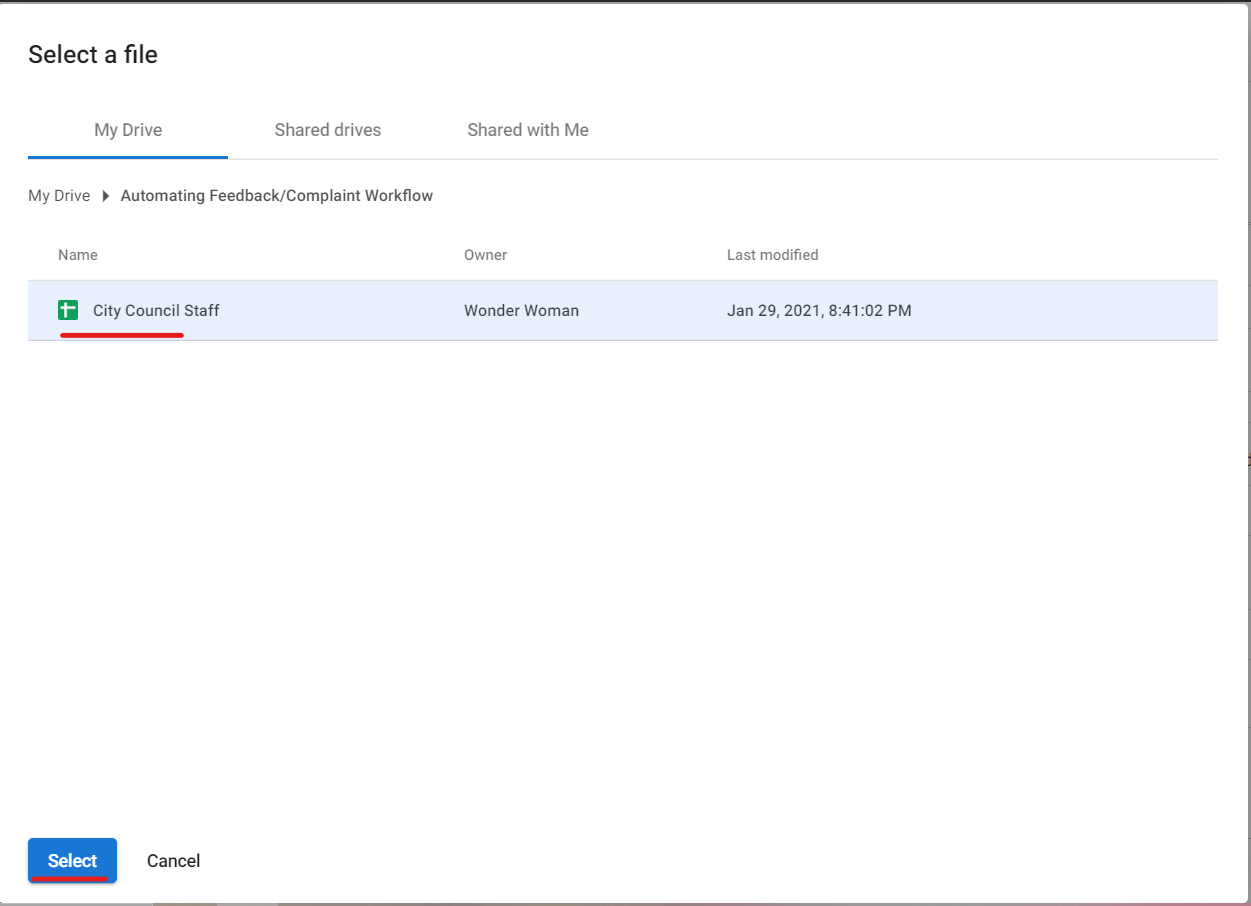
Make sure to assign the right worksheet in the Sheet Name field.
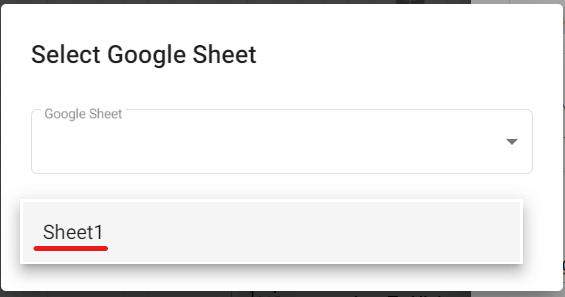
Scroll down further and enable Has Header. This will treat the first row of your “City Council Staff” file as headers. Also, click the Load Columns button.

In the Search Column section, click the dropdown button and select the row you want to lookup and retrieve. In our case, it’s the Post Code[A] column.
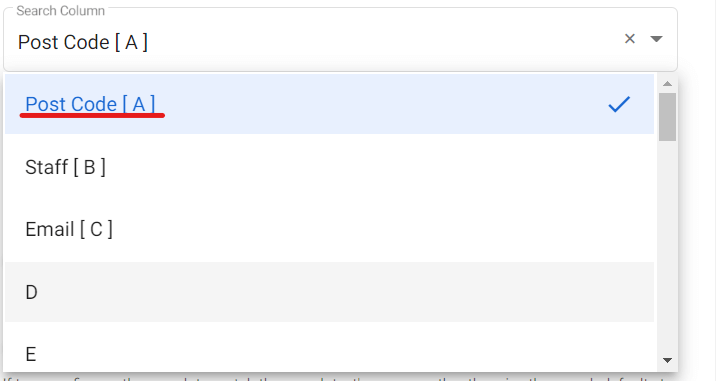
For the Search Value field, click the parameter icon. And under the Trigger list, select Post/Zip Code as the value.
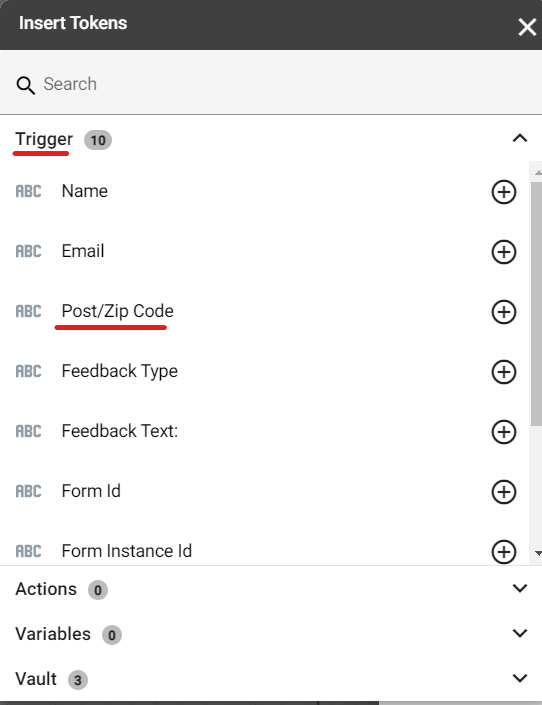
Retrieve Column values for Post Code[A], Staff[B], and Email[C].
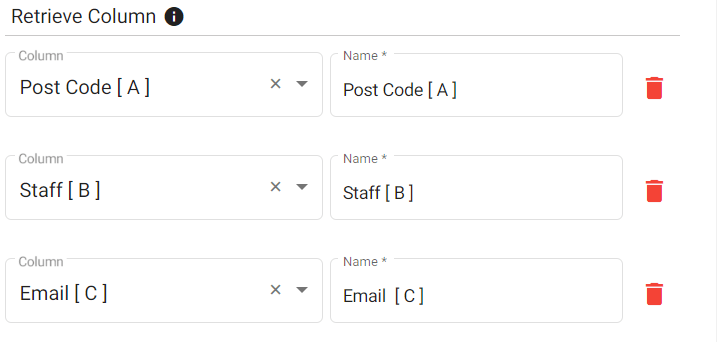
Step 4.
Go back to the Designer panel and click Utilities. And then, drag and drop the Log to History action into the Feedback/Complaint workflow. This action will log to the system your message while the flow runs its course.
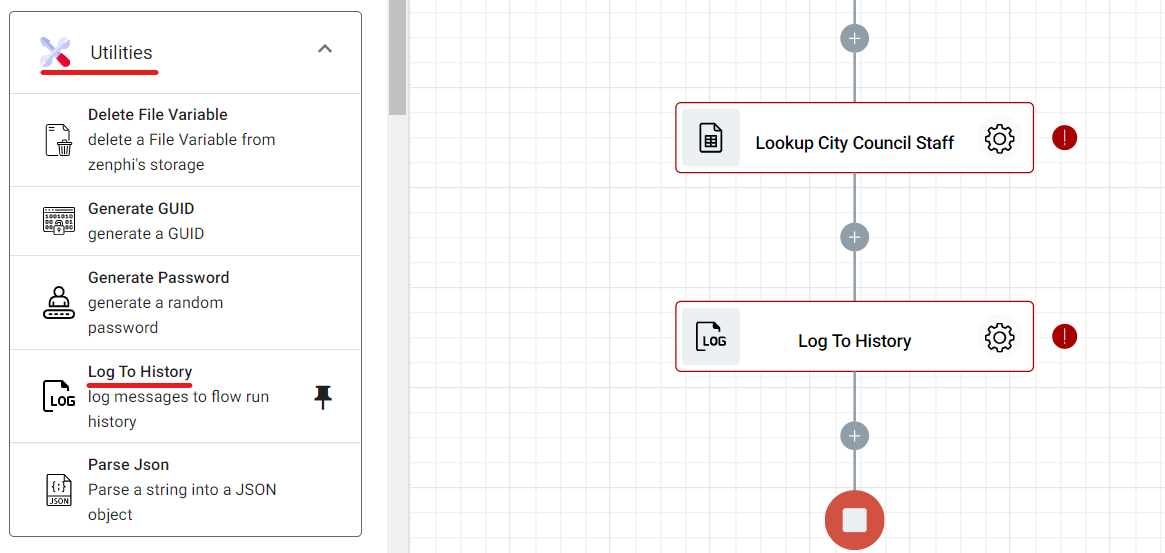
Configure this action by clicking the gear button. At the Message field, you can directly input your message or click the parameter icon to include some tokens. In our case, we included the feedback text and the staff assigned to check it.
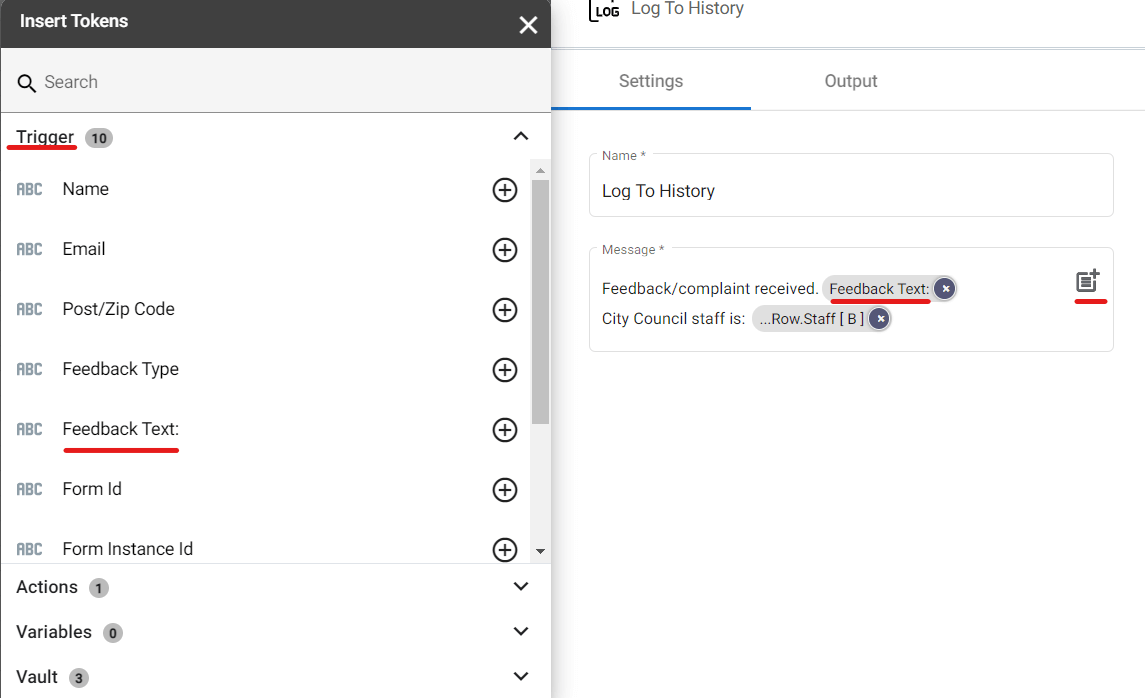
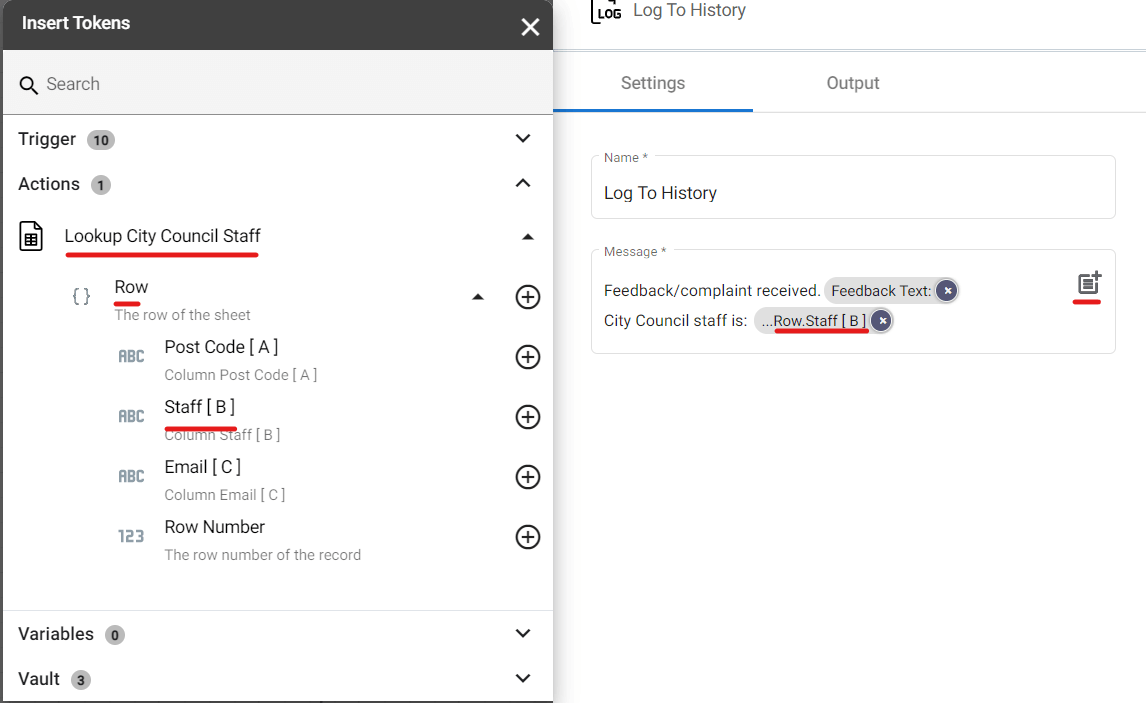
Here is how it looks in the system.

Step 5.
At the Designer panel, click GMail, and then drag and drop the Send Email action into the flow.
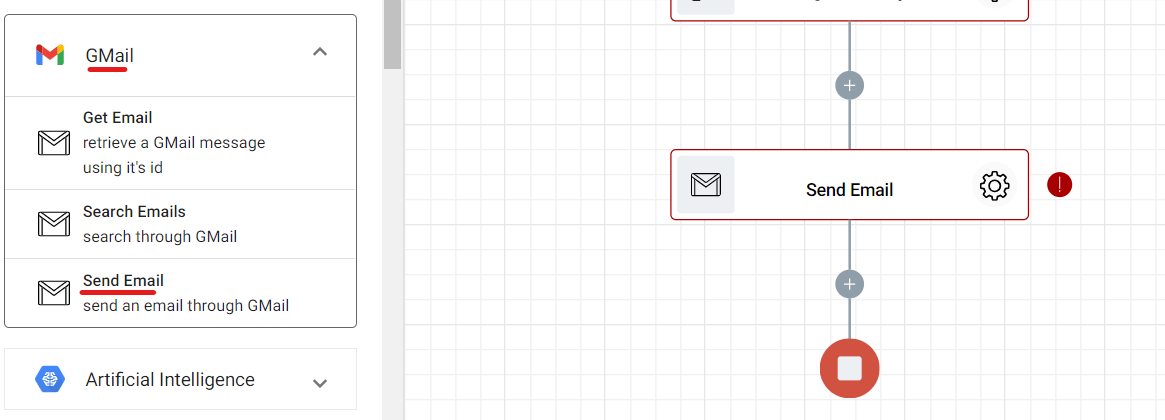
Start configuring this action by opening the gear button. At the Connection field, choose the Gmail account from which the email will be coming. You can also add a new Connection by clicking the + button.

For the To field, click the parameter icon. And under Trigger, select Initiator Email from the dropdown list. This action will automatically send an email to the person who submitted the Feedback/Complaint form.
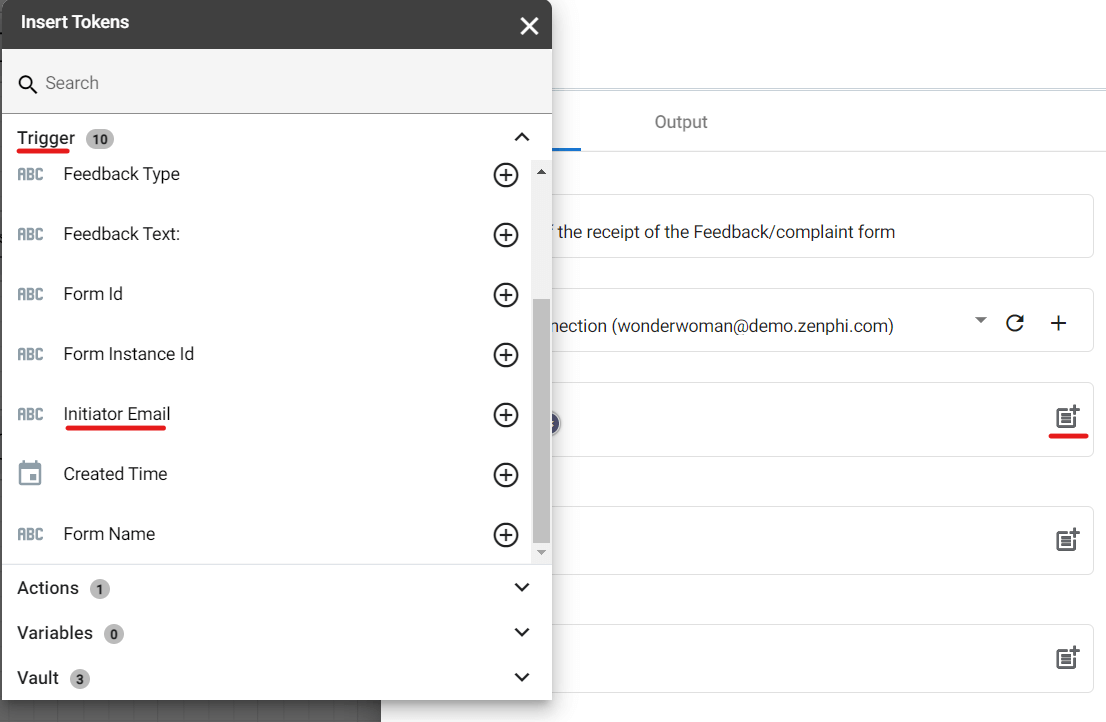
Directly input your email subject in the Subject field, you can also add a token by clicking the parameter icon.

For the email Body, you can also directly input your message and include other elements by clicking the parameter icon. In this case, I included the Name of the form sender.
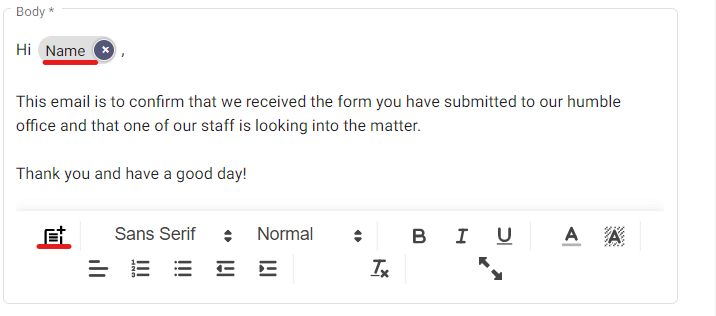
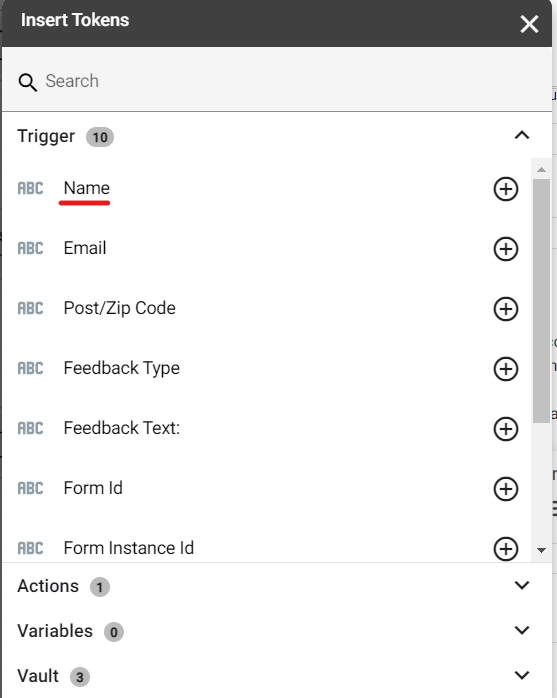
What this action will do is, it will send a confirmation email to the person who sent in the form.
Step 6.
Go back to the Designer panel, and then click Communication. Next is to drag and drop the Assign Task action. This will automatically notify the assigned person to look at the task and resolve it.

To configure this action, open the gear button. In the Task Name field, you can name the action to make the task clear.

For the Outcomes, it’s automatically set on Accept and Reject but you can add another according to your workflow’s needs.
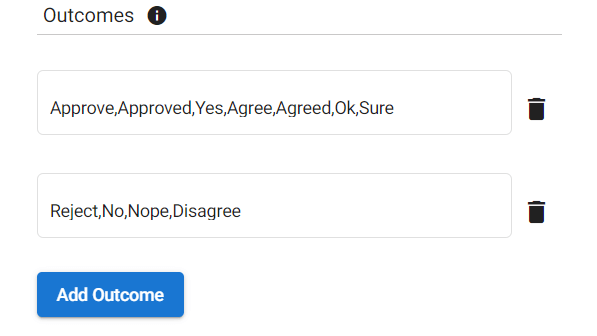
At the Assignee’s Email field, click the parameter icon, and under Lookup City Council Staff find Rows. Then click the dropdown menu and choose Email[C]. This will automatically retrieve the email of the staff assigned to that post/zip code.
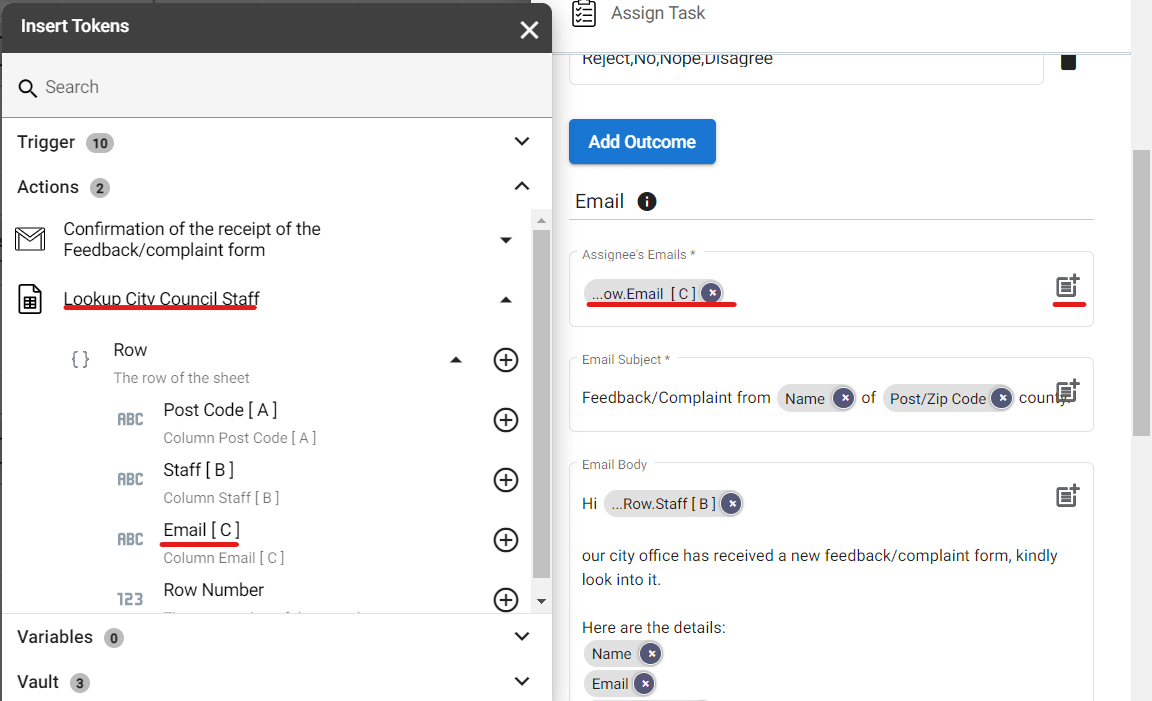
For the Email Subject, we included tokens such as the Name and Post/Zip Code of the form sender. Just click the parameter icon, and find them under Trigger.
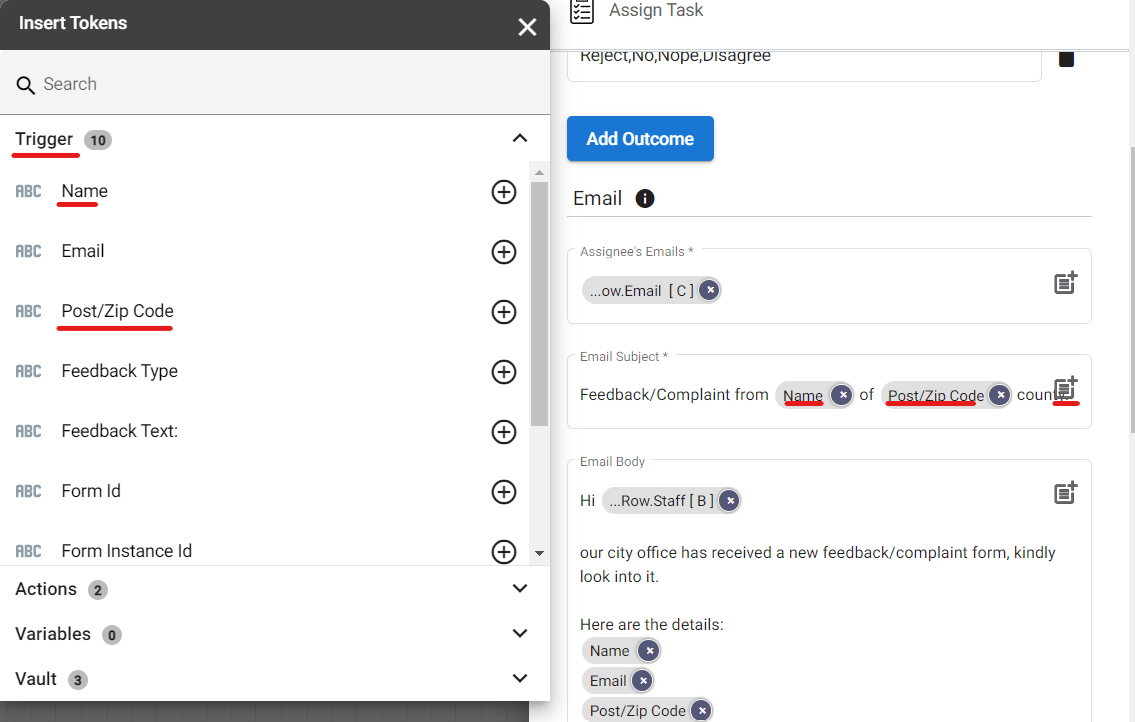
To configure the Email Body, open the parameter icon, and under Lookup City Council Staff, select Staff[B]. This will retrieve the name of the staff/assignee.
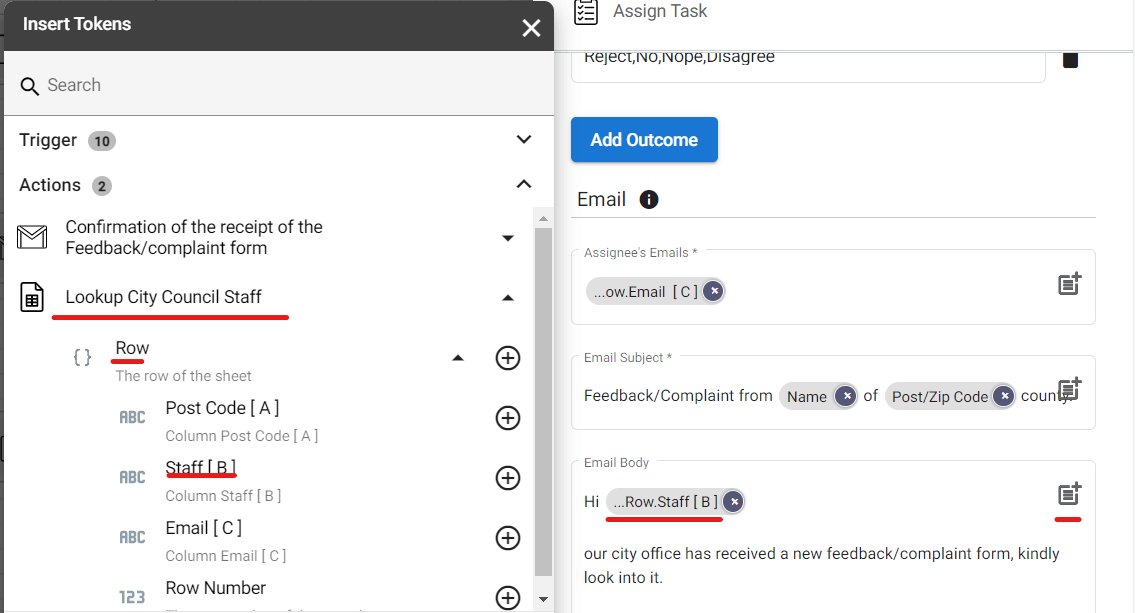
We also included details such as Name, Email, Post/Zip Code, Feedback Type, and Feedback Text. They are all under Trigger. This will retrieve all the details of the form and include it in the email so the assignee/staff can easily approve or reject the task.
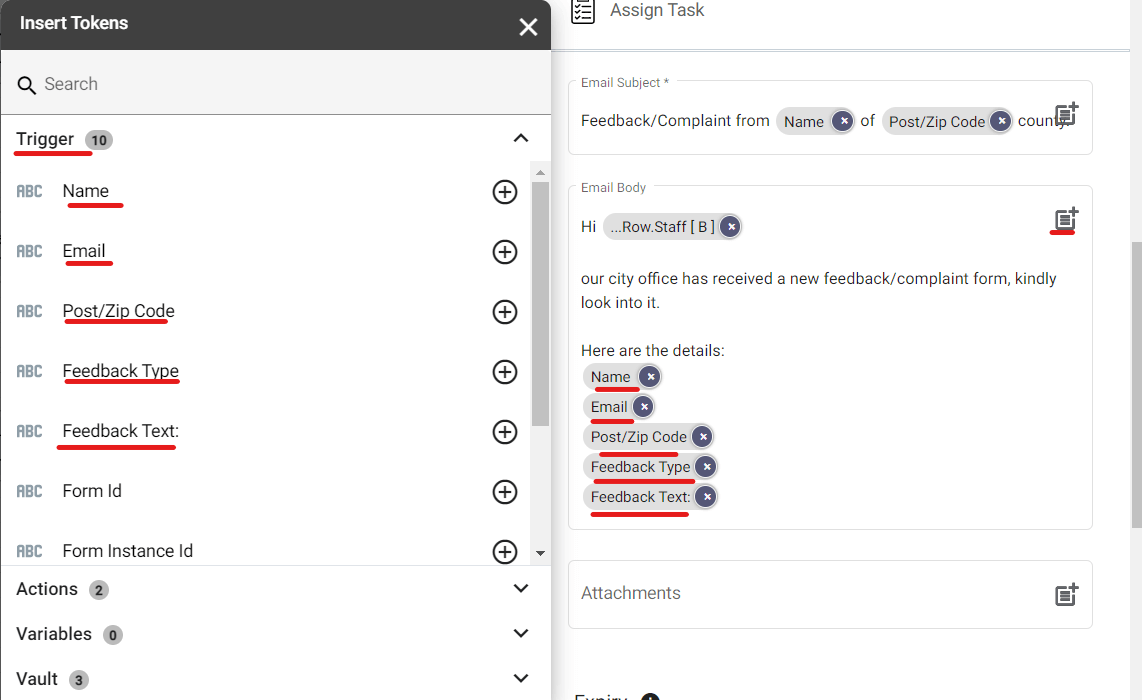
Conclusion
If this article got your interest enough to know more about how you can start digitizing your office process and take advantage of Google Workflow Automation, you can explore zenphi’s blog for more resources.

